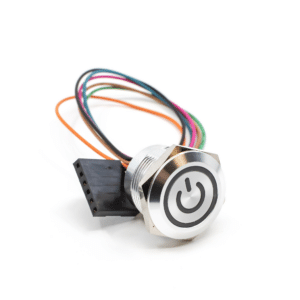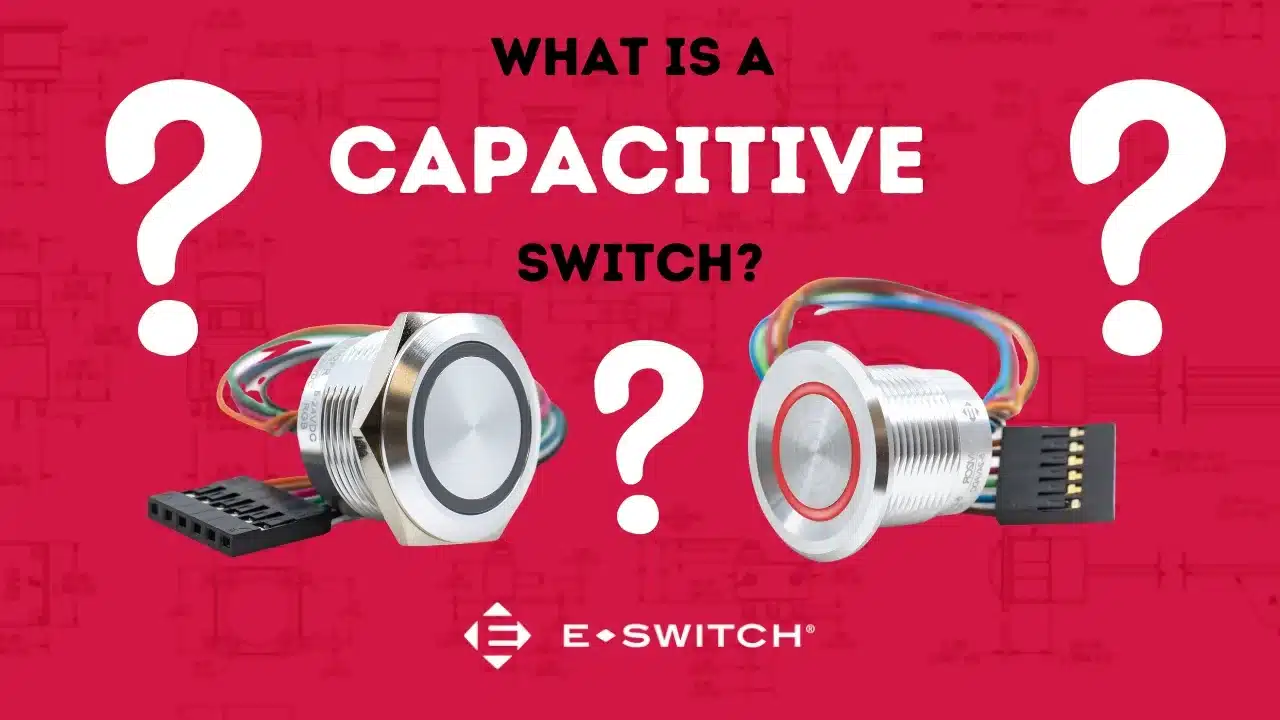What is a Capacitive Touch Switch?
A capacitive touch switch is a type of electronic switch that detects touch or proximity by measuring changes in capacitance. Capacitance is the ability of a system to store an electric charge. In a capacitive touch switch, there is a sensor that is sensitive to changes in capacitance caused by the presence or proximity of a conductive object, such as a human finger.
When a user touches the surface of a capacitive touch switch or comes close to it, the capacitance of the system changes, and this change is detected by the sensor. The switch then registers the touch or proximity event and triggers the desired response, such as turning on a light, changing settings, or executing a specific command in a device.
How Does a Capacitive Touch Switch Work?

A capacitive touch switch works based on the principles of capacitance and the ability of certain materials to store an electric charge. Here’s a basic answer for the question “how does a capacitive touch switch work?”
#1. Capacitance Principle: Capacitance is the ability of an object or system to store an electric charge. In the context of capacitive touch switches, the system typically consists of two conductive layers separated by an insulating material.
#2. Sensor Structure: The switch has a sensor structure that includes at least two layers – a conductive layer (usually made of indium tin oxide or a similar material) and an insulating layer (such as glass or plastic). These layers form a capacitor.
#3. Baseline Capacitance: When no external force is applied, the capacitor has a baseline capacitance. This is the normal state when there is no touch or proximity event.
#4. Touch or Proximity Event: When a conductive object, such as a finger, approaches or touches the surface of the switch, it disrupts the electric field between the conductive layers. The capacitance of the system changes due to the presence of the conductive object.
#5. Capacitance Change Detection: The switch circuitry continuously monitors the capacitance. When a change is detected, it signifies a touch or proximity event.
#6. Signal Processing: The detected change in capacitance is processed by the electronics associated with the touch switch. This processing may involve filtering out noise and determining the characteristics of the touch event.
#7. Output Activation: Once the touch event is identified and processed, the switch triggers a specific action or output. This could be turning on a light, activating a button or performing any other function programmed into the device.
#8. Release and Reset: When the conductive object is removed or the touch event ends, the system returns to its baseline capacitance, ready for the next touch or proximity event.
What Are They Used For?
These touch switches are commonly used in various electronic devices and applications, including smartphones, tablets, touch-sensitive control panels and displays, laptops and computers, consumer electronics, automotive interfaces, gaming consoles, home automation systems, industrial controls, medical devices and public spaces.
These applications showcase the versatility of capacitive touch switches in providing intuitive and responsive user interfaces across a wide range of electronic devices and industries.
Pros & Cons
Pros
Durability: Capacitive touch switches have no physical moving parts, reducing wear and tear over time. This makes them more durable and long-lasting compared to mechanical switches.
Sensitivity: They can be highly sensitive, allowing for a responsive and precise touch interface. They can detect even slight changes in capacitance, enabling accurate touch recognition.
Aesthetic Design: These switches have sleek and modern design aesthetics. They allow for smooth and flat surfaces without the need for protruding buttons, enhancing the overall appearance of electronic devices.
Ease of Cleaning: Since there are no physical buttons or gaps, capacitive touch surfaces are often easier to clean. This is especially beneficial for devices in which hygiene is a concern, like in the medical industry.
Multitouch Support: They allow for multitouch support, enabling gestures such as pinch-to-zoom and swiping. This enhances the user experience in devices like smartphones and tablets.
Customization: Capacitive touch switches offer flexibility in terms of design and customization. The interface can be easily adapted to accommodate various functions and layouts.
No Audible Clicking: Unlike mechanical switches that may produce audible clicks, capacitive touch switches operate silently. This can be advantageous in environments where noise is a concern.
Cons
Cost: The technology can be more expensive to implement than traditional mechanical switches. This cost factor may impact the overall pricing of electronic devices.
Sensitivity to Environmental Conditions: They can be sensitive to changes in environmental conditions, such as temperature and humidity. Extreme conditions may affect their performance.
False Touches: In some situations, these switches may register false touches or be triggered unintentionally. This can occur due to environmental factors or stray capacitance.
Lack of Tactile Feedback: Unlike mechanical switches that provide tactile feedback through clicks or resistance, capacitive touch switches lack physical feedback. Some users prefer the tactile feel of physical buttons.
Complexity of Integration: Integrating capacitive touch technology into devices requires additional electronic components and circuitry. This complexity may pose challenges during the manufacturing process.
Limited Functionality in Gloves: Capacitive touch screens may not respond to touch input when the user is wearing gloves, as gloves may not conduct electricity.
Power Consumption: While individual touch events consume minimal power, the continuous monitoring of capacitance can contribute to power consumption, especially in always-on devices.
E-Switch Capacitive Touch Switch Products
CS Series Illuminated, Touch Sensor Anti-Vandal Switch
Our CS Series illuminated, anti-vandal switches provide capacitive switch technology, also known as touch sensor. These illuminated, anti-vandal switches come with 150mm wire length and connector. There are ring or ring/power symbol lens style options with color illumination options of red, green, or blue.
The CS Series illuminated touch sensor switch is available for panel cutouts in two sizes: 19mm or 22mm. Circuit functions on these anti-vandal switches include latching or momentary, with SPST contact arrangements, a long electrical life of 50 million cycles and an electrical rating of 1A of 5-24VDC current.
PZ Series Anti-Vandal, Illuminated Piezo Switch
The PZ Series is an anti-vandal, illuminated piezo switch with momentary pulse function and 50 million cycles of electrical life. This piezo switch is available in two sizes: PZ4 (19mm diameter panel cutout) and PZ7 (22mm diameter panel cutout). Both require 10mm maximum panel thickness.
The PZ Series anti-vandal piezo switches are offered as non-illuminated or ring pattern illumination with LED RGB. Options include black or clear anodized housing finish, concave or flat bezel option and standard wire lead termination with 150mm or 300mm length leads.
